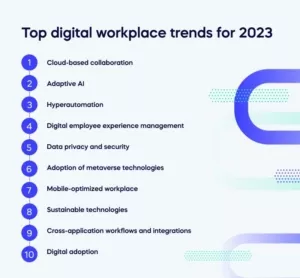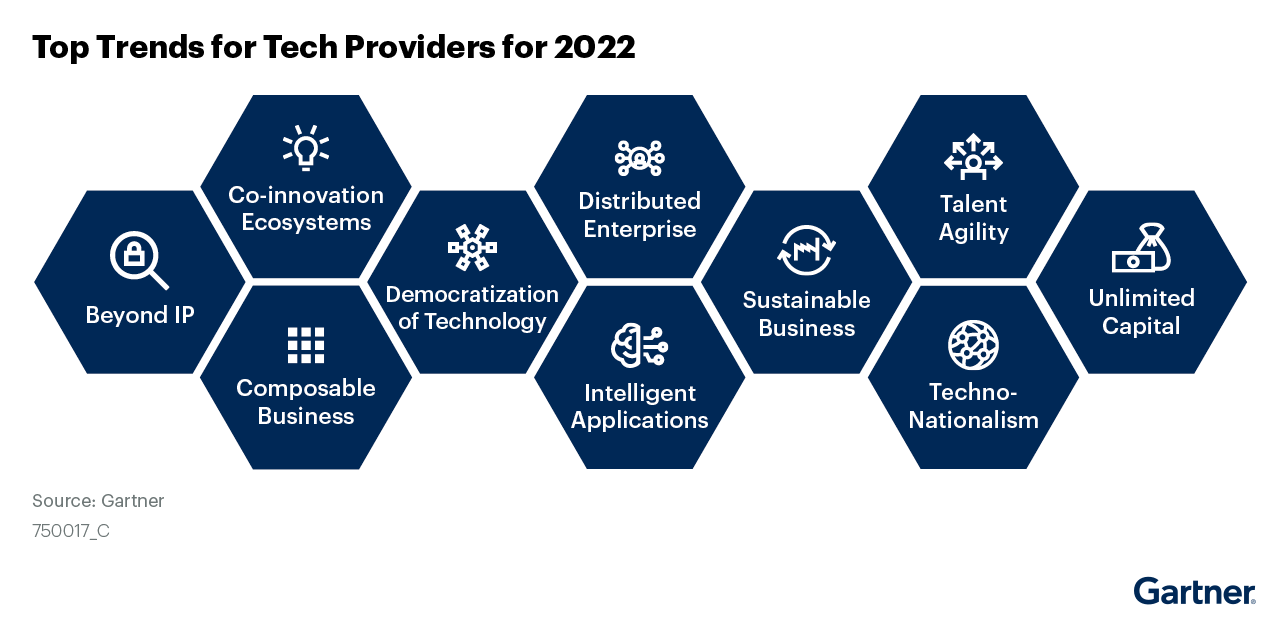employee well-being
Office Building Design Creating Inspiring Workspaces
In the world of commercial architecture, office building design plays a pivotal role in shaping the work environment and fostering productivity and creativity among employees. Let’s delve into the intricacies of designing office buildings that inspire and elevate the workplace experience.
Understanding User Needs and Preferences
A crucial aspect of office building design is understanding the needs and preferences of the users – the employees who will inhabit the space. This involves conducting thorough research and gathering insights into how they work, collaborate, and interact within the office environment. By understanding their preferences for layout, amenities, and aesthetics, architects can create spaces that cater to their specific needs and enhance their overall experience.
Maximizing Natural Light and Views
Natural light and views play a significant role in office building design, impacting everything from mood and productivity to energy consumption. Designing office spaces with ample windows and strategically positioned skylights allows natural light to penetrate deep into the interior, creating a bright and uplifting environment. Additionally, incorporating views of the surrounding landscape or cityscape can help employees feel connected to the outside world and provide visual relief during periods of intense focus.
Promoting Collaboration and Interaction
Collaboration and interaction are essential components of a vibrant and dynamic workplace culture. Office building design should include spaces that encourage spontaneous interactions and facilitate collaboration among employees. This may include open-plan work areas, breakout spaces, and communal areas such as cafes or lounges where employees can gather, share ideas, and connect with colleagues in a relaxed and informal setting.
Embracing Flexibility and Adaptability
In today’s rapidly evolving business landscape, flexibility and adaptability are key considerations in office building design. Spaces need to be designed to accommodate changing workstyles, technologies, and organizational structures. This may involve incorporating modular furniture, movable partitions, and flexible layouts that can be easily reconfigured to meet evolving needs and preferences.
Prioritizing Wellness and Sustainability
Wellness and sustainability are increasingly important considerations in office building design, with employers recognizing the impact of the built environment on employee health, happiness, and productivity. Designing office spaces with features such as biophilic design elements, indoor plants, and ergonomic furniture can help promote physical and mental well-being among employees. Additionally, integrating sustainable design strategies such as energy-efficient lighting, green building materials, and passive heating and cooling systems can reduce environmental impact and operating costs while creating healthier indoor environments.
Leveraging Technology for Connectivity
Technology plays a crucial role in modern office environments, facilitating communication, collaboration, and productivity. Office building design should incorporate the latest technology infrastructure to support seamless connectivity and communication among employees. This may include high-speed internet connectivity, wireless charging stations, video conferencing facilities, and smart building systems that optimize energy usage and comfort.
Ready to transform your office space into a dynamic and inspiring environment? Explore the possibilities of office building design, where expert architects and designers collaborate to create innovative workplaces that enhance productivity, creativity, and well-being. Whether you’re renovating an existing space or designing a new office building from
Automating Workspaces: Trends Shaping the Future

Automating Workspaces: Trends Shaping the Future
Workplace automation is undergoing a transformative evolution, reshaping the way businesses operate and enhancing efficiency. In this article, we delve into the current trends in workplace automation, shedding light on the advancements that are shaping the future of work.
Rise of Robotic Process Automation (RPA)
Robotic Process Automation (RPA) is at the forefront of workplace automation trends. RPA involves using software robots or “bots” to automate repetitive and rule-based tasks. From data entry to invoice processing, RPA streamlines workflows, reduces errors, and allows employees to focus on more strategic and creative aspects of their roles.
Integration of Artificial Intelligence (AI) and Machine Learning (ML)
The integration of Artificial Intelligence (AI) and Machine Learning (ML) is a game-changer in workplace automation. AI and ML algorithms enable systems to learn from data, adapt to changing scenarios, and make intelligent decisions. From predictive analytics for employee performance to chatbots for customer service, the applications of AI and ML are diversifying across various business functions.
Workflow Automation for Increased Productivity
Workflow automation is becoming increasingly sophisticated, encompassing entire business processes. This trend involves the automation of end-to-end workflows, allowing for seamless collaboration between different departments. By reducing manual handovers and delays, workflow automation enhances overall productivity and accelerates time-to-market for products and services.
Employee Self-Service Portals
Empowering employees through self-service portals is a rising trend in workplace automation. These portals enable employees to access information, submit requests, and perform various HR-related tasks independently. Employee self-service not only enhances efficiency but also contributes to a more engaging and satisfying employee experience.
Digital Adoption Platforms (DAPs) for Skill Development
With the rapid evolution of technology, ensuring that employees can effectively use new tools and platforms is crucial. Digital Adoption Platforms (DAPs) guide users through software interfaces, providing real-time assistance and tutorials. As businesses adopt new technologies, DAPs are instrumental in reducing learning curves and fostering quick and effective skill development.
Internet of Things (IoT) for Smart Workspaces
The Internet of Things (IoT) is transforming workspaces into intelligent environments. Connected devices and sensors enable the gathering of data on workplace usage, temperature, and lighting conditions. This data-driven approach allows organizations to optimize office layouts, improve energy efficiency, and enhance the overall work environment.
Enhanced Security with Automation
Workplace automation trends are also addressing the growing importance of cybersecurity. Automated security systems use AI to detect and respond to potential threats in real-time. By continuously monitoring network activities and identifying anomalies, these systems strengthen overall cybersecurity measures, safeguarding sensitive data and ensuring compliance with industry regulations.
Hybrid Work Models and Virtual Collaboration Tools
The rise of remote and hybrid work models has accelerated the adoption of virtual collaboration tools. Workplace automation trends are focusing on creating seamless virtual environments, integrating video conferencing, project management, and communication tools. This ensures that teams can collaborate effectively regardless of their physical location.
Emphasis on Employee Well-Being and Experience
Automation is not only about tasks; it also extends to enhancing the overall employee experience. Workplace automation
Innovative Horizons: Trends Shaping Business Evolution

Innovative Horizons: Trends Shaping Business Evolution
In the dynamic landscape of business, staying ahead requires a keen eye on emerging trends that shape innovation. From technology advancements to shifts in consumer behavior, businesses that embrace these innovation trends position themselves for success. Let’s explore some of the key trends driving business innovation.
Embracing Digital Transformation
Digital transformation is a pervasive trend reshaping how businesses operate. The integration of advanced technologies, such as artificial intelligence, machine learning, and automation, is streamlining processes, enhancing efficiency, and opening new avenues for growth. Companies that leverage digital tools find themselves better equipped to adapt to changing market dynamics.
Elevating Customer Experience through Personalization
Consumer expectations are evolving, and businesses are responding by focusing on personalized customer experiences. Innovative companies employ data analytics and AI to understand individual preferences, tailoring products, services, and interactions. This emphasis on personalization fosters stronger customer relationships and enhances brand loyalty.
Rise of Remote Work and Hybrid Models
The global shift towards remote work has become a transformative force. The adoption of digital communication tools, collaboration platforms, and flexible work arrangements has redefined the traditional office structure. Businesses that embrace remote work trends not only attract top talent but also benefit from increased productivity and a broader talent pool.
Sustainability as a Core Business Strategy
Sustainability is no longer an optional commitment but a business imperative. Companies are integrating environmentally conscious practices into their strategies, from sustainable supply chains to eco-friendly product development. Prioritizing sustainability not only aligns with societal expectations but also contributes to long-term business resilience.
Blockchain Revolutionizing Industries
Blockchain technology is disrupting industries by providing secure, transparent, and decentralized solutions. Beyond cryptocurrencies, businesses are exploring blockchain for supply chain management, secure transactions, and data integrity. This trend is reshaping how industries approach security and transparency in their operations.
Artificial Intelligence Driving Innovation
Artificial intelligence continues to be a driving force in business innovation. From predictive analytics to natural language processing, AI is enhancing decision-making processes and automating routine tasks. Businesses that harness the power of AI gain a competitive edge in efficiency, innovation, and customer satisfaction.
Augmented and Virtual Reality Transforming Experiences
Augmented reality (AR) and virtual reality (VR) are transforming how businesses engage with consumers. From immersive marketing experiences to virtual product trials, AR and VR technologies create interactive and memorable brand interactions. Businesses incorporating these technologies set themselves apart in a crowded market.
5G Revolutionizing Connectivity
The rollout of 5G networks is ushering in a new era of connectivity. This trend is not only enhancing internet speed but also unlocking possibilities for innovations like the Internet of Things (IoT) and real-time data processing. Businesses leveraging 5G technology can deliver faster and more reliable services, driving innovation in various sectors.
Evolving E-commerce and Contactless Solutions
The acceleration of e-commerce trends has been propelled further by a focus on contactless solutions. From touchless payments to virtual shopping experiences, businesses are adapting to changing consumer preferences. The integration of seamless and secure contactless options enhances customer satisfaction and
Fostering Mental Wellness: Workplace Health Initiatives
Fostering Mental Wellness: Workplace Health Initiatives
Workplace mental health initiatives are gaining prominence as organizations recognize the impact of mental well-being on employee performance, satisfaction, and overall productivity. In this article, we explore the importance of prioritizing mental health in the workplace and delve into effective initiatives that contribute to a supportive and thriving work environment.
Recognizing the Significance of Mental Health at Work
The first step in fostering mental wellness in the workplace is recognizing its significance. Mental health directly influences employee engagement, absenteeism, and overall job satisfaction. By acknowledging the importance of mental well-being, organizations set the stage for implementing initiatives that prioritize the mental health of their workforce.
Breaking the Stigma Surrounding Mental Health
One of the key challenges in addressing mental health in the workplace is the stigma associated with it. Organizations need to actively work towards breaking this stigma by fostering open conversations. Promoting a culture where employees feel comfortable discussing mental health concerns without fear of judgment is essential for creating a supportive environment.
Implementing Employee Assistance Programs (EAPs)
Employee Assistance Programs (EAPs) are instrumental in supporting mental health. These programs provide confidential counseling services, resources, and referrals to employees facing personal or work-related challenges. Implementing EAPs demonstrates a commitment to employee well-being and offers accessible avenues for seeking help.
Promoting Work-Life Balance
Balancing work and personal life is crucial for maintaining mental well-being. Organizations can promote work-life balance by implementing flexible work schedules, encouraging breaks, and discouraging excessive overtime. Striking a healthy equilibrium between professional and personal responsibilities contributes to reduced stress and improved mental health.
Creating a Positive Work Environment
The work environment plays a significant role in influencing mental health. A positive workplace culture fosters a sense of belonging, camaraderie, and psychological safety. Organizations can promote inclusivity, recognize achievements, and provide opportunities for professional growth to contribute to a positive and supportive atmosphere.
Offering Mental Health Training for Managers
Managers play a pivotal role in supporting employee mental health. Providing mental health training for managers equips them with the skills to recognize signs of distress, initiate supportive conversations, and direct employees to appropriate resources. Educated managers contribute to a more compassionate and understanding workplace culture.
Introducing Stress-Reduction Programs
Stress is a common contributor to mental health challenges. Introducing stress-reduction programs, such as mindfulness sessions, yoga classes, or relaxation workshops, provides employees with tools to manage stress effectively. These initiatives promote mental resilience and create a conducive environment for well-being.
Encouraging Regular Communication and Feedback
Open communication channels are essential for understanding and addressing employee concerns. Organizations should encourage regular check-ins, provide opportunities for feedback, and actively listen to employee input. Effective communication fosters a sense of belonging and ensures that mental health concerns are identified and addressed promptly.
Establishing Mental Health Policies and Resources
Formalizing mental health policies demonstrates a commitment to employee well-being. Organizations should establish clear policies that address mental health, including provisions for time off for mental health reasons. Additionally, providing accessible mental health resources, such as helplines
Nurturing Employee Well-Being: Effective Workplace Wellness Programs

Nurturing Employee Well-Being: Effective Workplace Wellness Programs
Workplace wellness programs have become integral in fostering a healthy and thriving work environment. By prioritizing employee well-being, organizations can enhance productivity, job satisfaction, and overall company success. In this article, we explore the key components and benefits of effective workplace wellness programs.
Understanding the Essence of Workplace Wellness Programs
Workplace wellness programs are comprehensive initiatives designed to promote and support the overall health and well-being of employees. These programs go beyond traditional health insurance benefits and address various aspects of physical, mental, and emotional wellness. The goal is to create a workplace culture that values and prioritizes the health of its workforce.
Promoting Physical Health Through Fitness Initiatives
Physical health is a cornerstone of overall well-being. Effective workplace wellness programs incorporate fitness initiatives that encourage employees to stay active. This can include fitness challenges, gym access, yoga classes, or even initiatives that promote walking meetings. By integrating physical activity into the workday, organizations contribute to improved cardiovascular health and reduced stress levels.
Fostering Mental and Emotional Wellness
The importance of mental and emotional wellness cannot be overstated. Workplace wellness programs should include resources and activities that address stress management, mindfulness, and emotional resilience. Providing access to counseling services, workshops, and mental health days helps create a supportive environment where employees feel valued and understood.
Encouraging Healthy Nutrition Choices
Nutrition plays a vital role in overall well-being. Workplace wellness programs often incorporate initiatives that promote healthy eating habits. This can involve providing nutritious snacks, organizing nutrition workshops, or offering subsidies for healthy meal options. A well-balanced diet contributes not only to physical health but also to improved cognitive function and sustained energy levels.
Flexible Work Arrangements for Work-Life Balance
A key element of workplace wellness is recognizing the importance of work-life balance. Effective programs support flexible work arrangements, allowing employees to manage their professional and personal responsibilities more effectively. This flexibility contributes to reduced burnout, increased job satisfaction, and a healthier work environment.
Regular Health Screenings and Preventive Care
Prevention is a crucial aspect of workplace wellness. Regular health screenings and preventive care initiatives can identify health issues early on, enabling prompt intervention. Organizations may arrange on-site health check-ups, vaccination drives, or provide incentives for employees to undergo preventive health measures. These initiatives contribute to a healthier workforce and lower healthcare costs in the long run.
Creating a Supportive Work Environment
A supportive work environment is fundamental to the success of workplace wellness programs. Organizations should foster a culture where employees feel comfortable discussing their wellness needs. This involves open communication, destigmatizing mental health discussions, and providing resources for employees facing health challenges.
Employee Engagement and Wellness Challenges
Employee engagement is key to the success of wellness programs. Employers can organize wellness challenges, such as step competitions, mindfulness challenges, or team fitness goals. These initiatives not only promote physical activity and healthy habits but also foster a sense of camaraderie among employees.
Measuring Success and Adjusting Strategies
To ensure the effectiveness of workplace
Navigating Business Travel Trends: A Modern Landscape

Navigating Business Travel Trends: A Modern Landscape
Business travel has undergone significant transformations in recent years, shaped by technological advancements, changing work cultures, and global events. Understanding and adapting to these evolving trends is crucial for businesses seeking to optimize their travel strategies and enhance the overall travel experience for employees.
Technology Revolutionizing Travel Management
The integration of advanced technologies has revolutionized how businesses manage and streamline travel. From artificial intelligence-powered booking platforms to mobile travel apps, technology enhances efficiency, provides real-time updates, and ensures a seamless travel experience. Embracing these innovations is key to staying ahead in the dynamic landscape of business travel.
Flexible Work Arrangements Impacting Travel Patterns
The rise of flexible work arrangements, accelerated by the global shift to remote and hybrid work models, has significantly impacted business travel patterns. Employees are increasingly combining work and leisure travel, leading to a blurring of lines between business and leisure trips. This trend necessitates flexible travel policies that accommodate diverse needs and preferences.
Sustainability as a Driving Force
Sustainability has emerged as a central theme in business travel. Companies are becoming more conscious of their carbon footprint and adopting eco-friendly practices. This includes choosing sustainable transportation options, supporting green accommodations, and integrating environmentally responsible policies into their travel programs. Sustainable business travel is not just a trend; it’s a commitment to corporate social responsibility.
Focus on Employee Well-being During Travel
The well-being of employees during business travel is gaining prominence. Companies are recognizing the importance of ensuring that employees remain healthy, rested, and engaged while on the road. This involves offering wellness programs, providing access to mental health resources, and selecting travel options that prioritize comfort and convenience.
Rise of Bleisure Travel for Work-Life Balance
Bleisure travel, the combination of business and leisure trips, is on the rise. Employees are increasingly seeking opportunities to extend their business trips for personal exploration. This trend not only enhances work-life balance but also presents an opportunity for businesses to attract and retain top talent by offering a more holistic approach to business travel.
Enhanced Duty of Care Protocols
With an increased focus on employee well-being, companies are implementing enhanced duty of care protocols. This includes robust safety measures, real-time tracking of travelers, and comprehensive risk management strategies. Proactive duty of care ensures that employees feel secure during their travels, contributing to a positive overall travel experience.
Virtual Meetings Impacting Travel Frequency
The widespread adoption of virtual meeting platforms has altered the frequency and necessity of business travel. While certain engagements still demand in-person interactions, virtual meetings have become a viable alternative for routine discussions, reducing the need for frequent travel. Striking the right balance between virtual and physical engagements is crucial for optimizing travel budgets and resources.
Integration of Travel Technology for Personalization
Personalization is becoming a hallmark of modern business travel. Companies are leveraging travel technology to tailor experiences based on individual preferences. From personalized itineraries to automated expense management, integrating technology enhances the overall travel experience and contributes to employee

